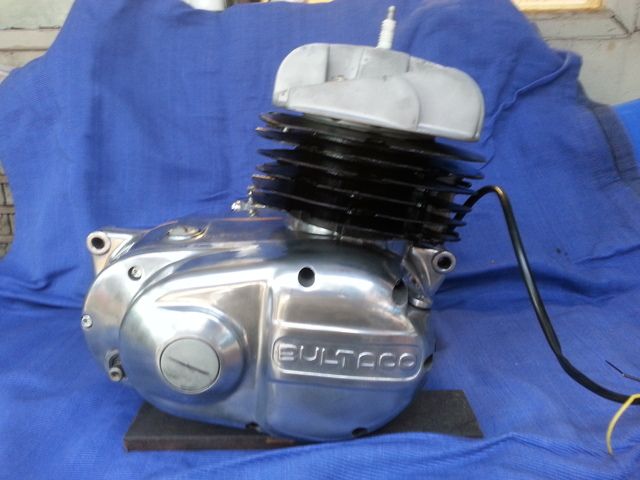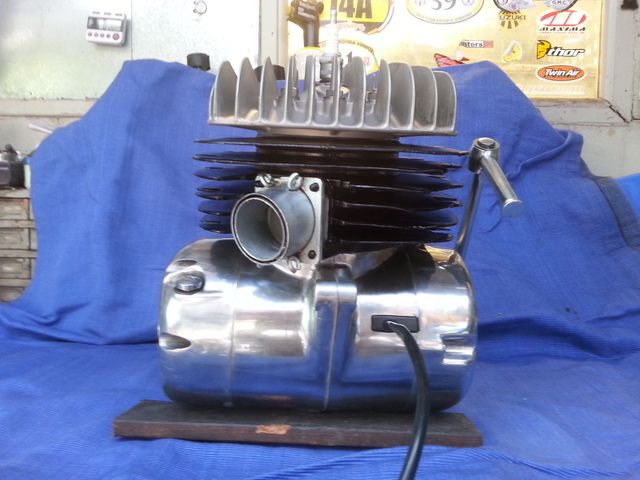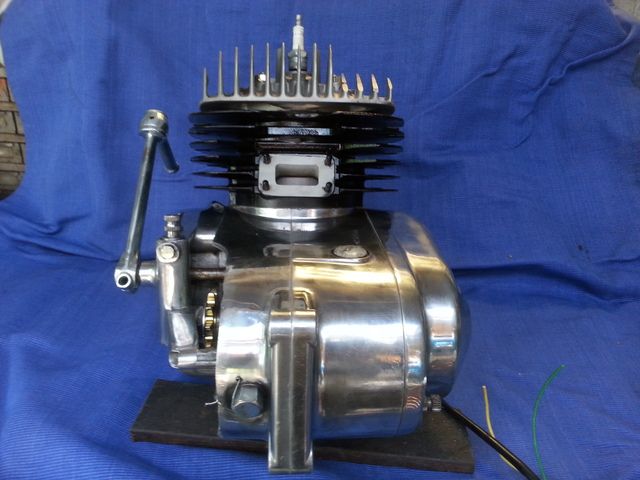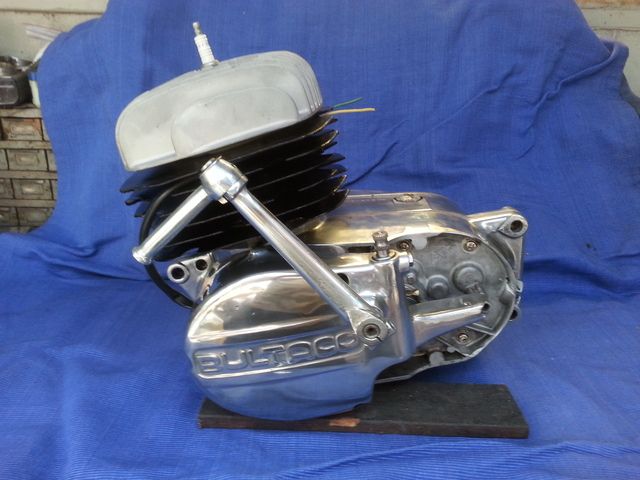UPDATE: Given that the frame was now rolling, it was time to get the engine up on the bench and make a start on it. Despite (potentially) years of neglect, the power plant didn't look too bad. A few bent and cracked fins and some minor scrapes and dents in the cases, but nothing to get too stressed over.
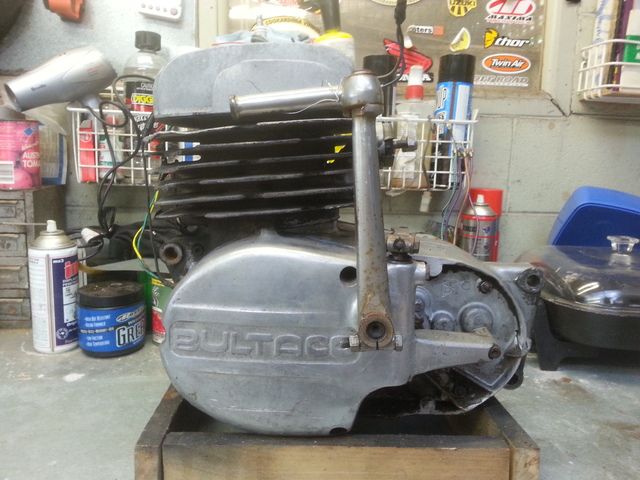
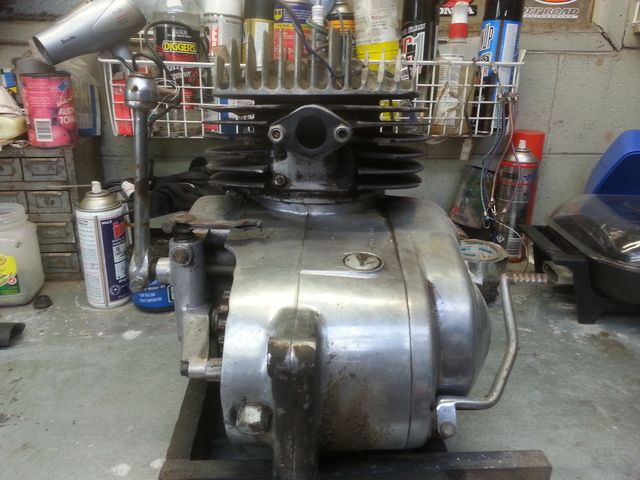
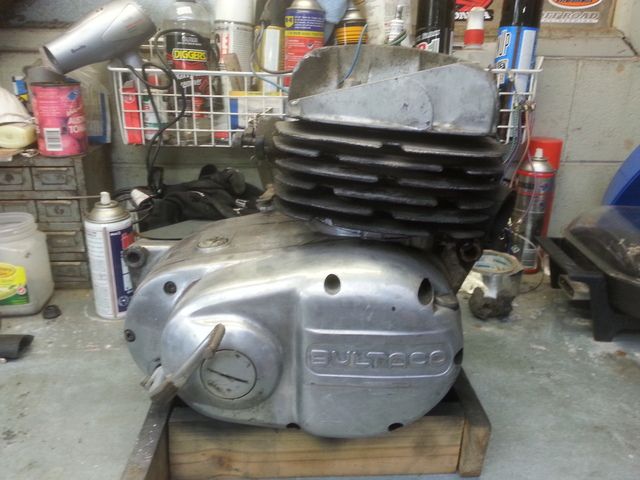
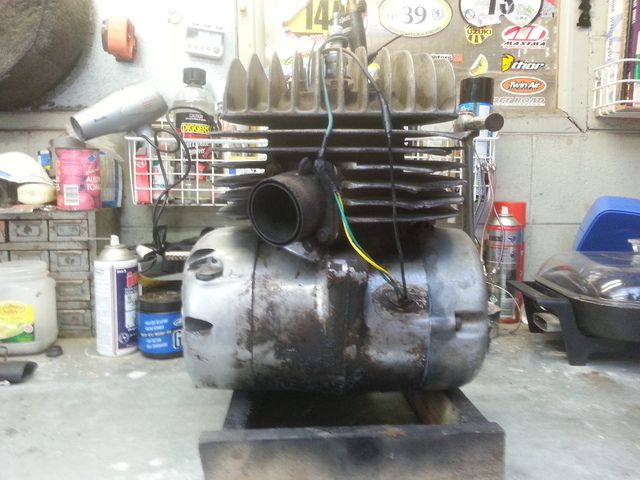
Before I pulled it out of the bike, I made sure it had spark (which it did), so theoretically when I put it all back together, it should still spark. Happy with that knowledge, I tried to remove the sump plug, but it was stuck fast and the bolt head was pretty ratty. No probs I thought, I'll disassemble from the top and flip it to drain the oil and get a better attack at the plug. So I unbolted the head and that looked pretty good. Slid the barrel off and despite a bit of water marking on the lower region of the bore, that too looked good. Piston showed no signs of wear or gouging, so still happy with the progress. Studs were looking a bit rusty, but a wire brushing would soon sort them out.
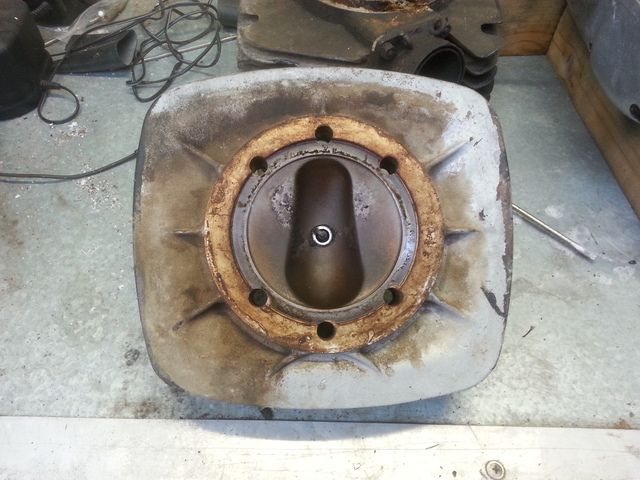


OK, time to flip.......and my heart sank! A 50 mm crack in the case revealed itself when I cleaned away the grunge festooning the bottom of the engine.
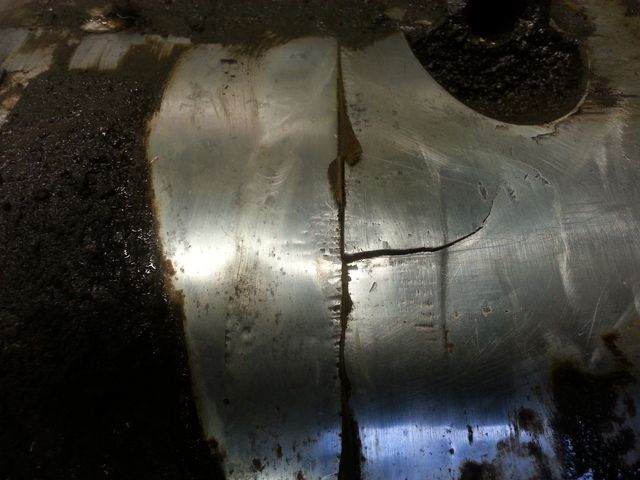
Panicking, I sent a photo to Paul (Ridewell Motorcycles), and asked if this was terminal. His response was, "Nah, she'll be right!" Buoyed by this, I continued on my merry way and pulled it down to present it to him for welding.
Obviously, to repair this crack, it was necessary to split the cases, which meant the Sherpa was getting new crank and gear-box bearings (regardless of wether it needed them or not). So when the repair was done, he gave me back the cases and side covers and they were duly polished and returned. meanwhile, I took the stator to an auto-elect mate of mine and had some new wires soldered to the coils, as the originals were not only crispy and stiff, but had been butchered over the years. The stator was returned to Paul and along with a new gasket kit, the bottom end was rebuilt.
Closer inspection of top-end components revealed that all was in great shape, so a light hone was all that was needed (along with bead-blasting and painting) before that went together and completed the re-build.
